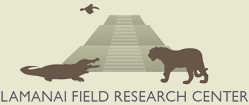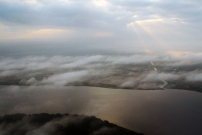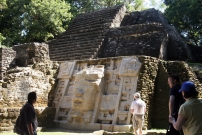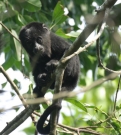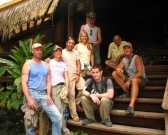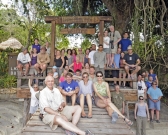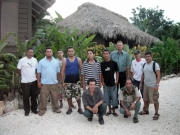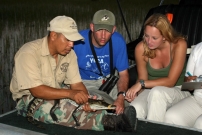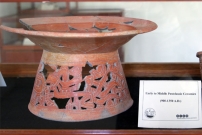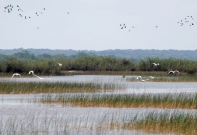About
Because of its prime setting on the New River Lagoon and its close proximity to the Lamanai Archaeological Reserve, LFRC provides an ideal setting for biological, archaelogical and environmental studies.
Goals and Objectives
Lamanai Field Research Center’s goals and objectives are to:
- provide a center that will promote and sustain an interest in Belizean conservation.
- provide a base for researchers to study Belize’s cultural and natural resources.
- provide a means by which that information can then be disseminated to the Belizean community at various levels.
- provide a bridge between scientists and the general public in an informal learning environment.
- offer programs that complement and supplement conservation and science education in schools.
- offer opportunities that provide instruction in the scientific methodology of field studies.
Research History
In the 1990s, Lamanai Field Research Center focused heavily on archaeological research led by Dr. Elizabeth Graham, continuing excavations and researching the nearby ancient Mayan settlement’s diet, architecture, ceramics, iconography and metallurgy. A Howler Monkey research project also began to collect data and encourage national conservation efforts for the endangered species. Additionally, Lamanai was discovered to be a “hotbed of tarantula diversity” by Dr. Steve Reichling of Memphis State University, who discovered three new species and one genus (Crassicrus lamanai) in the vicinity while conducting tarantula research.
Dr. Steve Platt of the Wildlife Conservation Society began work at Lamanai on the endangered Morelet’s crocodile (Crocodylus moreletii) and in 1997, Dr. Scott McMurry and Thomas Rainwater of Texas Tech University expanded on this early work by using Lamanai as their base and the New River lagoon populations as their focus of study. In 2001, LFRC partnered with the University of Florida to begin the comprehensive crocodile monitoring program which has continued to this very day.
Lamanai Field Research Center has also hosted research projects on ornithology, forest ecology, subtropical agriculture, bats and small mammals.
The Community Wildcat Conservation project began in 2010, and the local landowners now have a better understanding of the conservation value of the five species of large cats in the area. In collaboration with Dr. Rainwater of the Turtle Survival Network, a Hicatee monitoring program is also beginning to survey populations of the endangered river turtle near Lamanai.
